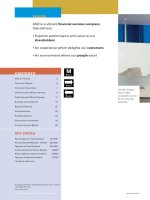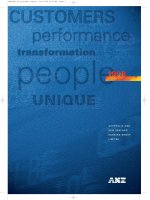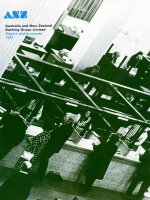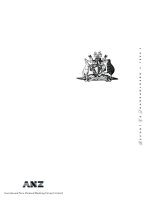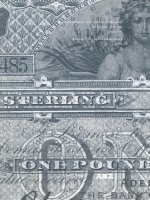Report microeconomic group 6
Bạn đang xem bản rút gọn của tài liệu. Xem và tải ngay bản đầy đủ của tài liệu tại đây (1.16 MB, 17 trang )
BỘ GIÁO DỤC VÀ ĐÀO TẠO
TRƯỜNG ĐẠI HỌC KINH TẾ - TÀI CHÍNH TP. HỒ CHÍ MINH
REPORT
MICROECONOMIC
Ho Chi Minh City , <2021>
BỘ GIÁO DỤC VÀ ĐÀO TẠO
TRƯỜNG ĐẠI HỌC KINH TẾ - TÀI CHÍNH TP. HỒ CHÍ MINH
REPORT [MICROECONOMIC]
GROUP 6
Lecturer: PhD. Pham Quoc Hai
Ho Chi Minh City, <2021>
I. INFORMATION ABOUT VINACAFE.
1. History of Vinacafe factory.
Vinacafé, also known as Vinacafe, is a brand of instant coffee products, and is also a
common name used to refer to Vinacafé Bien Hoa Joint Stock Company. This is one of
the leading famous product and business brands in Vietnam.
-Coronel coffee factory.
In 1969, a French businessman, Marcel Coronel, with his Vietnamese wife, Tran Thi
Khanh, started the construction of the Coronel Coffee Factory in Bien Hoa Industrial
Park with the aim of reducing coffee transportation costs. about France.
The factory is designed with a production capacity of 80 tons of instant coffee/year,
with all machinery and equipment imported from Germany, and is the first instant coffee
processing factory in the entire region. Indochina country. However, until 1975, the
factory had not been successfully tested due to asynchronous machinery and equipment,
lack of technical labor in Vietnam and the fierce war situation.
-Bien Hoa Coffee Factory.
After April 1975, the Provisional Government of the Republic of South Vietnam
nationalized the Coronel Coffee Factory. After the reunification of Vietnam, Coronel
Coffee Factory was renamed Bien Hoa Coffee Factory and was assigned to the General
Department of Food Technology to manage.
After taking over the factory, Vietnamese engineers sought to overcome the lack of
synchronization and successfully put into operation the instant coffee production line. In
April 1977, the first batch of instant coffee was released, marking an important
milestone: Vietnam successfully produced instant coffee. A year later, according to the
Protocol signed by Vietnam with the countries of the Socialist bloc on barter, from 1978,
Bien Hoa Coffee Factory started exporting instant coffee to the Soviet Union and other
countries. Eastern Europe.
In 1982, Bien Hoa Coffee Factory was transferred to the Ministry of Food Industry to
manage, a member of the Union of Milk - Coffee - Confectionery Enterprises. In 1992,
the factory was separated from the Union of Dairy - Coffee - Confectionery Enterprises,
becoming an independent state-owned enterprise, directly managed by the Ministry of
Agriculture and Food Industry.
Also during this time, after Vietnam implemented the renewal policy and opened up
trade with the West, Marcel Coronel - Tran Thi Khanh's family several times asked for
permission to get their instant coffee factory back but did not success due to the inability
to disassemble old machinery and equipment to carry it elsewhere, while the cost of longterm preservation that Vietnamese management agencies offer is very large.
In 1998, the factory built another instant coffee production line with spray drying
technology. This line has a designed capacity of 800 tons of instant coffee/year, 10 times
larger than the old Coronel Coffee Factory.
- Vinacafé Bien Hoa Joint Stock Company.
On December 29, 2004, Bien Hoa Coffee Factory was transformed from a state-owned
enterprise into a joint stock company. Because the Vinacafé brand is well known in
Vietnam and known by many foreign customers, the founding shareholders (most of
whom are people of Bien Hoa Coffee Factory) have named the company a new joint
stock company. Vinacafé Bien Hoa, abbreviated as Vinacafé Bien Hoa.
On December 20, 2013, Vietnam Coffee Corporation - the largest state shareholder in
Vinacafe sold most of its shares in Vinacafe. Currently, 90% of Vinacafe Bien Hoa's
shares are in three organizations, namely Masan Consumer Corporation (Masan
Consumer) with 53.2%, then Gaoling Fund (23.3%). and Vietnam Coffee Corporation
(12.8%).
(1.1. Source: Vinacafe.vn)
2. Instant coffee lines
Wake-Up Saigon 3 in 1 (bar format)
Wake-Up Coffee Black Stone
Wake-Up Cafe Saigon
Wake-Up Coffee with Weasel flavor
Classic
Bésame 3 in 1
Vinacafe 4 in 1
Vinacafé eight kinds of the best coffee beans in Vietnam
Vinacafé soluble black PS . box
Vinacafé soluble black PET bottle 50g
Vinacafé 3 in 1 box PS hộp
Vinacafé 3 in 1 gold bag
Green Tea Energy Booster F247
Coffee Phil Instant Drink
-
Roasted coffee Café
Popular roasted coffee beans
Premium roasted coffee beans
Natural ground coffee
Absolute Heritage ground coffee
Heritage Crown Coffee Ground
Vinacafe Selected Coffee Ground
Coffee ground Vinacafe Natural
-
Wake-Up coffee-flavored energy drink 247
Wake-up 247 coffee-flavored energy drink has natural ingredients from water, sugar,
food C02, caramel color, vanilla flavor, coffee flavor, caffeine, taurine, inositol, vitamin
B3, vitamin B6, conditioner Adjust acidity, salt.
-
Vinacafé QUALITY - Saigon Iced Milk Coffee
This is a product made entirely from the first 100% juice of pure roasted coffee simulated as a filter.
-
Café de NAM
Café de Nam is produced in the form of pellets, and is introduced by Vinacafe as
100% pure roasted and ground Robusta and Arabica coffee.
(2.1.
Source: caphehuongvicuocsong.com)
3. Brands of Vinacafe.
-Emigrate.
Right after the successful production of the first batch of instant coffee, the main
products of Bien Hoa Coffee Factory are still pre-processed coffee products due to the
habit of using ground coffee of Vietnamese people. Instant coffee products are mainly
exported to the Soviet Union and Eastern European countries. At that time, the factory's
processed coffee products did not have their own brand.
It was not until 1983 that the trademark "Vinacafé", with the meaning of Vietnamesemade coffee, began to appear on the packaging of instant coffee products exported to the
Eastern European market. This labeling of origin marks the birth of the Vinacafé brand.
-Domestic.
Although using the trademark "Vinacafé" on export products, domestic products still
use the trademarks of the Union of Dairy-Coffee-Confectionery Enterprises. In the late
1980s, orders for Vinacafé instant coffee were decreasing with the speed of disintegration
of the Soviet Union and Eastern European bloc. In 1990, Vinacafé officially returned to
the Vietnamese market, although some products of Bien Hoa Coffee Factory had been
consumed in this market before. At that time, Vietnamese users still kept the habit of
drinking roasted and ground coffee, not familiar with the habit of using instant coffee.
Therefore, the factory has launched Vinacafé 3-in-1 Instant Coffee, with ingredients of
sugar and cream powder mixed with instant coffee, pre-packed in small packages, hitting
the market segment of users with habit of drinking coffee with milk without having to
wait for coffee to drip through the filter. The success of the product, including the spread
of many people who have worked and studied in Eastern Europe, has helped Vinacafé
brand quickly dominate the domestic instant coffee market.
-Brand Positioning Edit.
(3.1. Source: Vinacafe.com)
With the success of instant coffee products, Vinacafé brand became popular. In the
period of international integration, the brand has been registered for intellectual property
by Bien Hoa Coffee Factory in Vietnam and many countries around the world.
4. Reasons to choose Vinacafe.
From the leading position in the instant coffee industry and owning strong brands such
as Vinacafé, Wake-up ... Vinacafé Bien Hoa has successfully expanded the brand Wakeup 247 (coffee-flavored energy drink), currently occupy the 4th position with a market
share of about 5% in the energy drink industry in Vietnam, achieving a growth rate of
58.3% in the first 9 months of 2017 ) believes that coffee and coffee products will be one
of the pillars of the strategy to develop the beverage industry and create high "added
value" for Vietnam's coffee industry. I want to analyze more clearly the types of
expenses of the company through the 7 types of expenses learned in chapter 10.
II. THE COST OF VINACAFE.
1. The cost of Vinacafe.
This is the data that we have collected about vinacafe company. We have based on this
company’s annual report on the 7 types of expenses we learned about: variable cost(VC),
fixed cost(FC), total cost(TC), average total cost(ATC), average variable cost(AVC),
average fixed cost(AFC) and quantity (Q). And the unit is billion VND.
The cost of Vinacafe
Company
In the given table, VC includes labors and materials. These numbers of materials
decrease over the years from 2208.9 in 2018 to 1698 in 2020. And the figures for labors
slightly decreased from 106.3 in 2018 to 98.6 in 2020. Move to fixed cost (FC) include
the factors is not change such as selling cost, transportation, taxes,… the factors in the
first column of Fc I will collectively be referred to as selling cost and the second column
is administrative expenses to easier to explain. As you know that in the theory FC is fixed
cost, will not change but in the reality FC still has changes. Specifically for Vinacafe, the
selling and administrative cost significantly decreased because initially the company
needs a lot of money to advertise and promote to reach customers, but now the company
has had certain achievements and is known by many customers, so this cost is reduce and
the enterprise has an efficient operating system, so this cost is also drive down. The data
for transportation and technology in 2019 is 60.3, which is 1,8 higher the one in 2018 at
58.5. After that in 2020, it rise to 61.6 billion VND. The figures for tax increased 42.9,
82.2, 99.6 in 2018, 2019, 2020, respectively. It based on this company’s year-over-year
revenue. The last data, I will show you is quantity of coffee of Vinacafe. With the unit is
ton. As you know, we are facing the Covid 19 pandemic. The pandemic that started at the
end of 2019 so far has greatly affected the economy of our country and the coffee
industry is not exception. Coffee production decreased significantly down more than 7.7
thousand tons of coffee in 2 years 2019 and 2020. This greatly affects the cultivation and
sale of coffee.
2. Theory of cost.
The first is VC (Variable Cost). Variable Cost is the total varies with the output level.
Variable Cost includes materials and labors.
The second is FC (Fixed Cost). Fixed Cost is the total cost doesn’t change according to
the output and includes: Selling cost (selling cost, advertising, warehouse and saleman);
Administrative cost (managers, staffs and market research); Transports and Technology
cost (transports, technology and depreciation); Taxes payable to the State (income tax,
VAT).
From VC and FC we get the TC, AFC, AVC ATC and MC.
- TC (Total Cost) is total cost of production. Total cost equals VC plus FC.
- AFC (Average Fixed Cost) is fixed cost allocated toa product. Average Fixed Cost
equal fixed cost divided by Q (Quantity).
- AVC (Average Variable Cost) is variable cost allocated to a product. Average variable
cost equal variable cost divided by Q.
- ATC ( Average Total Cost) is total cost for a product calculated by Total Cost divided
by Q.
- MC (Marginal Cost) is equal to the Total cost of the current year minus the previous
year.
Years
2018
2019
2020
VC
FC
TC
Q
2315.2
1987
1796.6
182.1
196.8
194.8
2497.3
2183.8
1991.4
44222
46040
38248
3. Illustrations.
AVC AFC ATC
0.052
0.043
0.046
0.0041
0.0042
0.005
0.056
0.047
0.052
MC
-313.5
-192.4
(3.1. Chart 1)
(3.2. Chart 2)
4. Comparisions.
a) Compare theory and reality of TC, VC, FC.
FC,VC,
TC
VC
TC
FC
Q
(4.1. Chart 3)
(4.2. Chart 4)
The drawing shows us
FC does not mean the theory that it changes every year.
In particular, FC.
- 2018 is 126. 1 billion with the highest sales and management costs in three years,
only shipping and tax costs are not up.
- 2019, 8. 8 billion is the year with the highest fc for the year because of sales,
management and high taxes, although transportation costs are from 60.3 billion
58. 5 billion ( 2020)
- By 2020, 8. 8 billion, although the state' s tax price has to be quite high, more than
twice as much as 2018, but the sales and management costs are much lower than
2018, FC does not increase significantly.
From 2018 2019 FC has a sign. But 2019 2020 has a slight reduction but
negligible.
So the FC is no longer a direct line of // Q, which has a movement over every year
- VC went down every year when Q to go down
+2018:2315.2 billion with Q is 44222.0
+2019: 1987.0 billion with Q is 46040.0
+ 2020 : 1796.6 billion with Q is 9778.5
- TC is on the VC.
b) Compare theory and reality of AFC, AVC, ATC, MC.
(4.3. Chart 5)
(4.4. Chart 6)
* The drawing in the short term with AFC, AVC, ATC.
AFC increases every year with the same coefficient:
+ 2018: 0. 0029
+ 2019: 0. 0031
+ 2020: 0. 0040
Compared to the theory that AFC increases as Q over the years
- AVC and ATC have a drop in each year especially by 2020
The relationship between MC and ATC
- MC < ATC => ATC decrease
- MC < AVC = > AVC increase
The relationship between MC versus ATC and AVC is true. But MC did not cut the
ATC shaft and AVC any point in the picture.
* Costs found in financial reports through 2018 - >2020.
- The total cost varies with the output level (VC) of vinacafe decreasing year by years
- The total cost doesn’t change according to the output ( FC) Change through each year
but not significantly
= > Total cost of production (TC) decrease.
- Total cost for a product ( ATC) change by annual output quantity, but 2019 - 2020 is
reduced.
- Fixed cost allocated to a product ( AFC) increase due to FC in 2019, which is slight
decrease in 2019 - 2020 and 2018 - 2019, but 2019 - 2020 increase.
- Variable cost allocated to a product (AVC) decrease because VC decrease.
Reference material
1. />2. caphehuongvicuocsong.com
3.
4. – Annual report 2020.
5. – Annual report 2018.
6.

